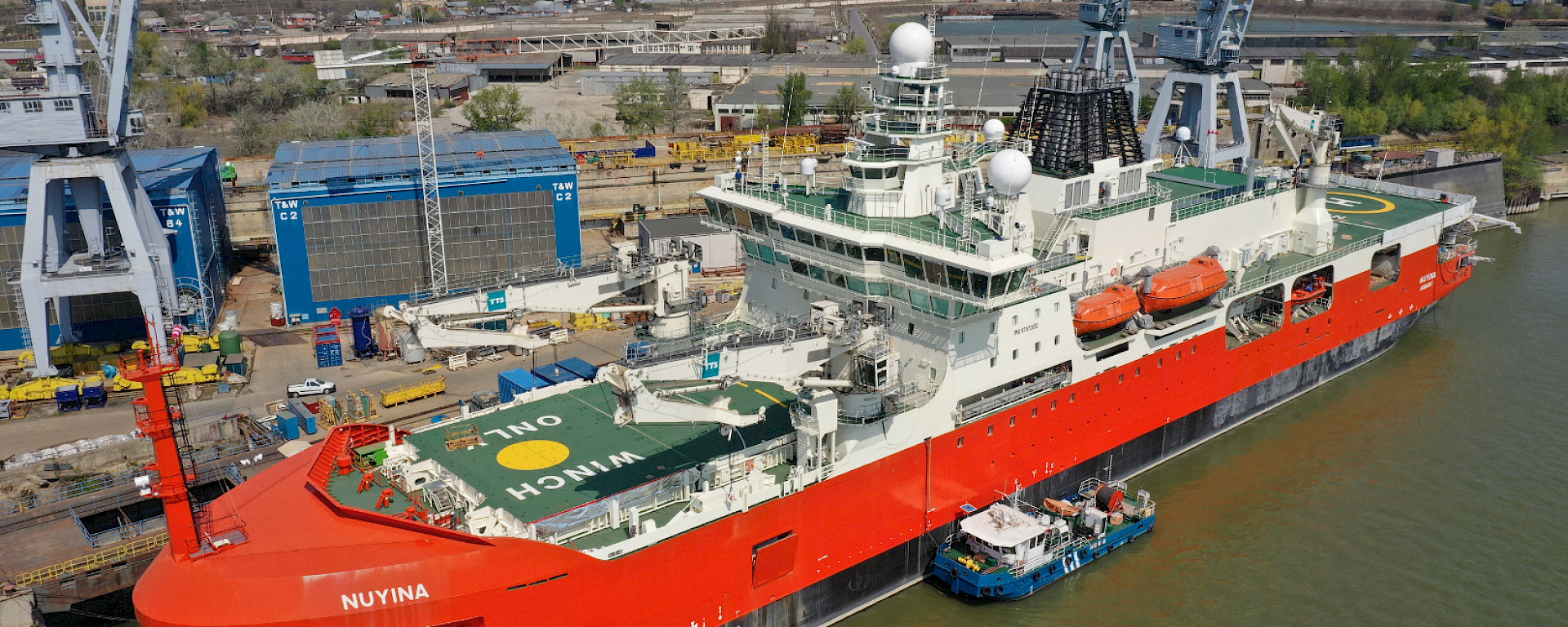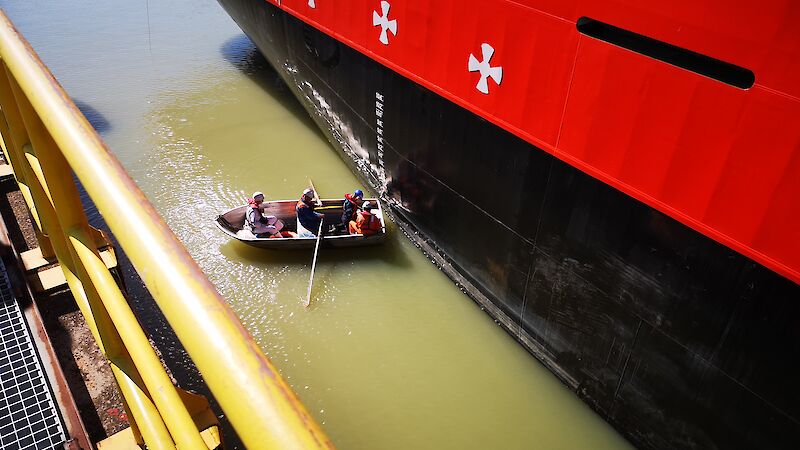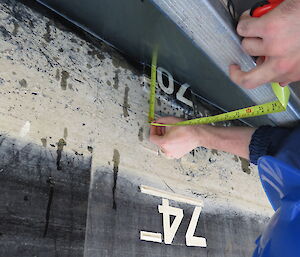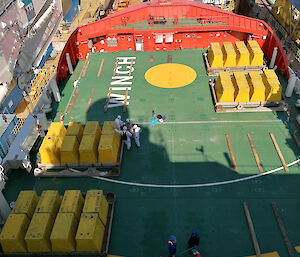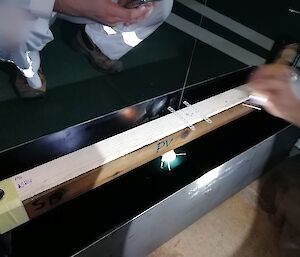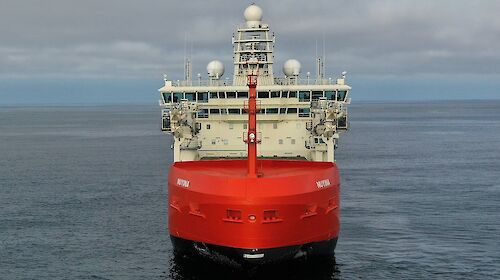From his office in Tasmania, naval architect Clive Evans spent seven hours monitoring real-time tests conducted by Damen Shipyard personnel, via text messages, live photos and video, and data transfers.
“The ‘inclining' experiment is a critical test that measures the weight and centre of gravity of the ship and it’s usually the last harbour test before sea trials.
“Because of the COVID-19 pandemic the Australian Antarctic Division project team couldn’t oversee it in person, so we briefed our Romanian-based representative about what to look for and when.
“I had to use my experience to work out what we expected to see at each stage and what images and data we needed to get to verify what was being done.
“This required us to exchange hundreds of messages.”
A similar process was also undertaken by the ship’s operator, Serco.
To measure the weight of the ship and its centre of gravity along its length, testing personnel were simply able to measure the draft marks on the side of the ship while it was tethered in the wet dock.
However, measuring the centre of gravity from top to bottom was more complicated.
“This is a key parameter that affects the stability of the ship and a crucial part of verifying that the ship will meet international stability standards,” Mr Evans said.
To measure it, a series of weights – 192 tonnes in total – were moved in a standardised pattern from one side of the ship to the other. The amount the ship rolled or ‘heeled’ was then recorded using a special pendulum.
“The pendulum is suspended from a six metre long wire through the cargo hold and you can measure how much it moves to give you the precise heel angle of the ship,” Mr Evans said.
“Then using trigonometry and a set of calculations you can determine the vertical centre of gravity.”
Mr Evans said preparing for the tests was the longest part of the exercise.
“We need to do these tests based on the empty weight of the ship, but there’s always water, fuel and oil present.
“So you have to go into every compartment – and there’s several hundred of those on the Nuyina – and make sure everything that’s not part of the ship is removed, and everything that is part of the ship, such as the painting or laboratory equipment, is complete or installed.
“But the ship has to be upright and level side to side and front to back, so you have to add ballast water to achieve that and account for it in the calculations.”
If anything is overlooked, the test can quickly accrue errors, so constant monitoring is necessary to ensure it progresses as expected.
“Our representative sent me photos and data at key stages so I could calculate whether we were getting the results we expected. So our remote technologies were critical to this process,” Mr Evans said.
The testing and commissioning of manufacturers’ equipment on the ship still needs to be completed before the Nuyina can begin sea trials, and these will depend on the lifting of COVID-19 restrictions. However, the Antarctic Division’s contingency planning should see the ship to arrive in Hobart in early 2021.

